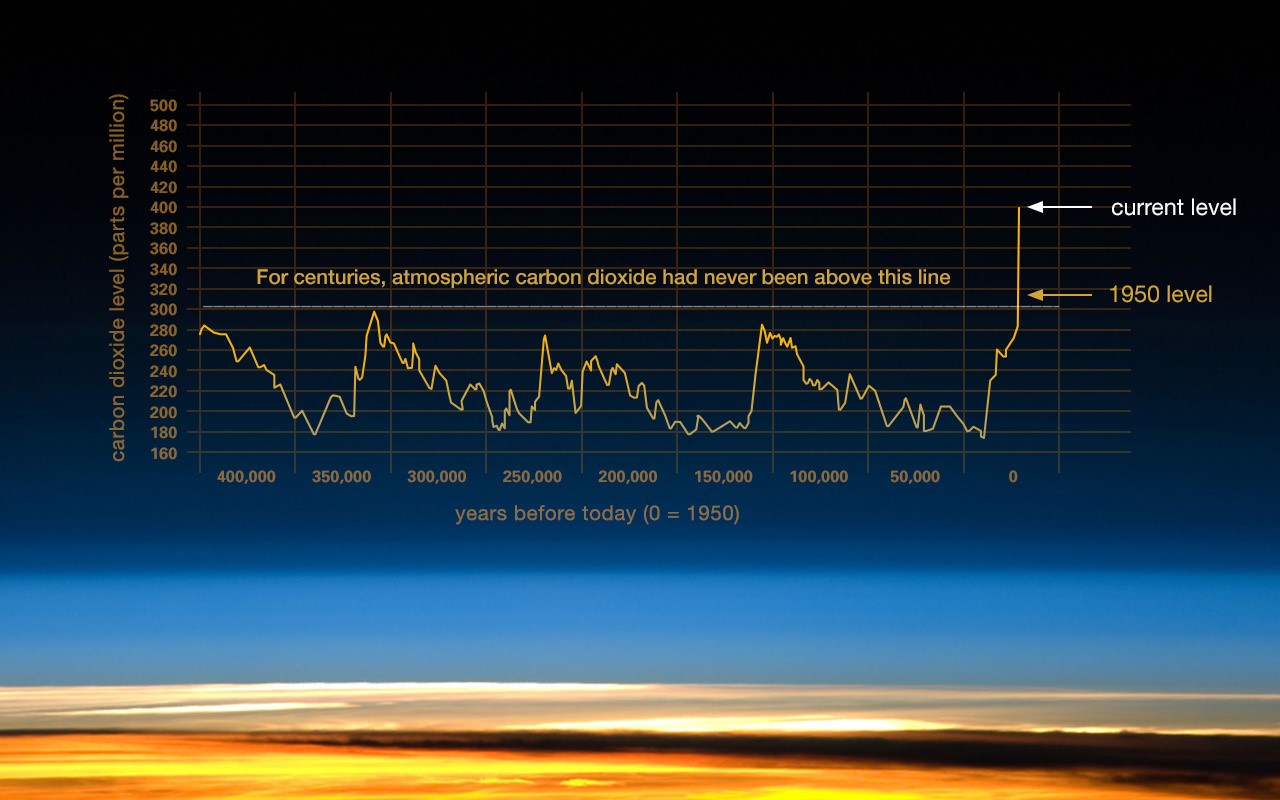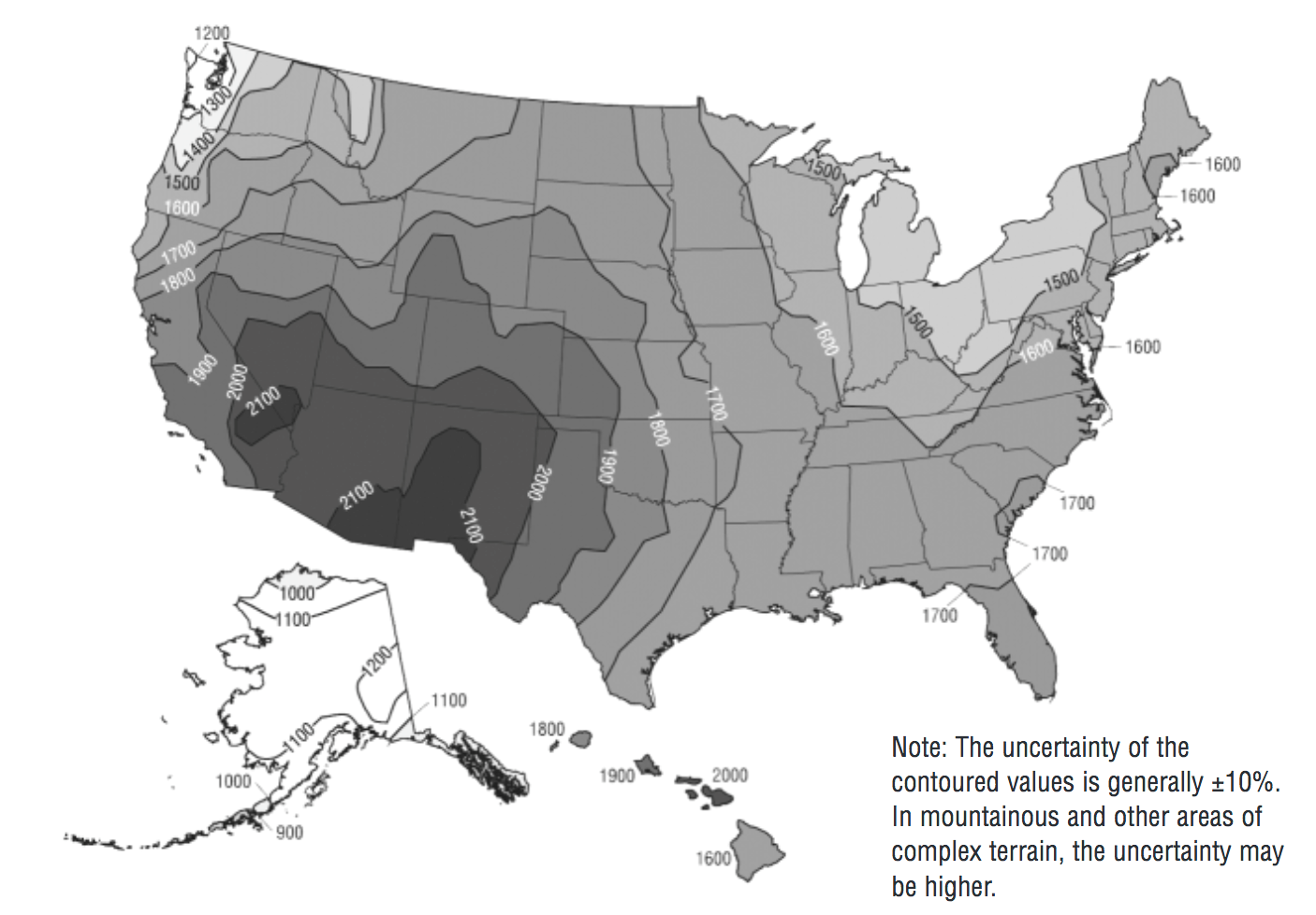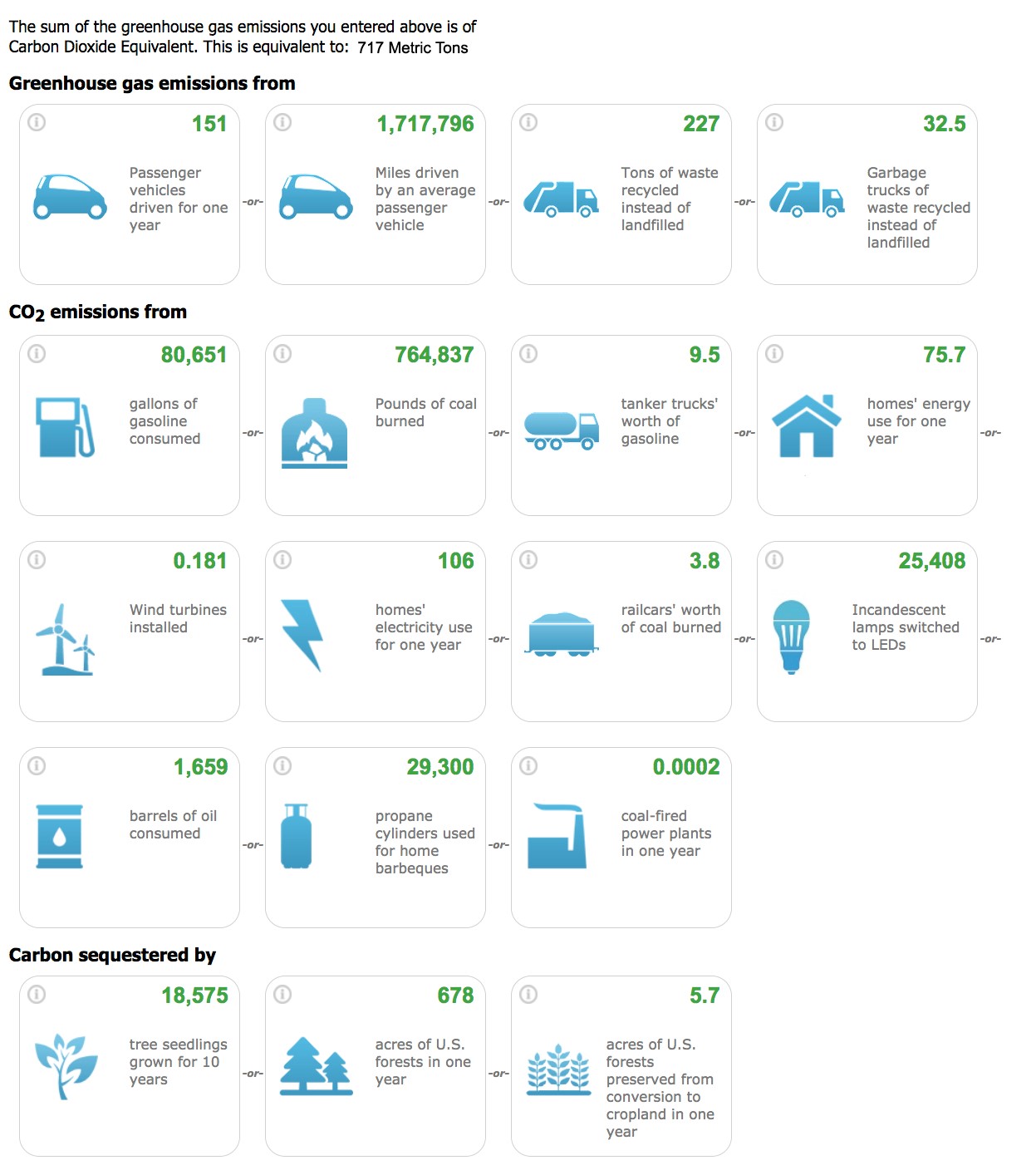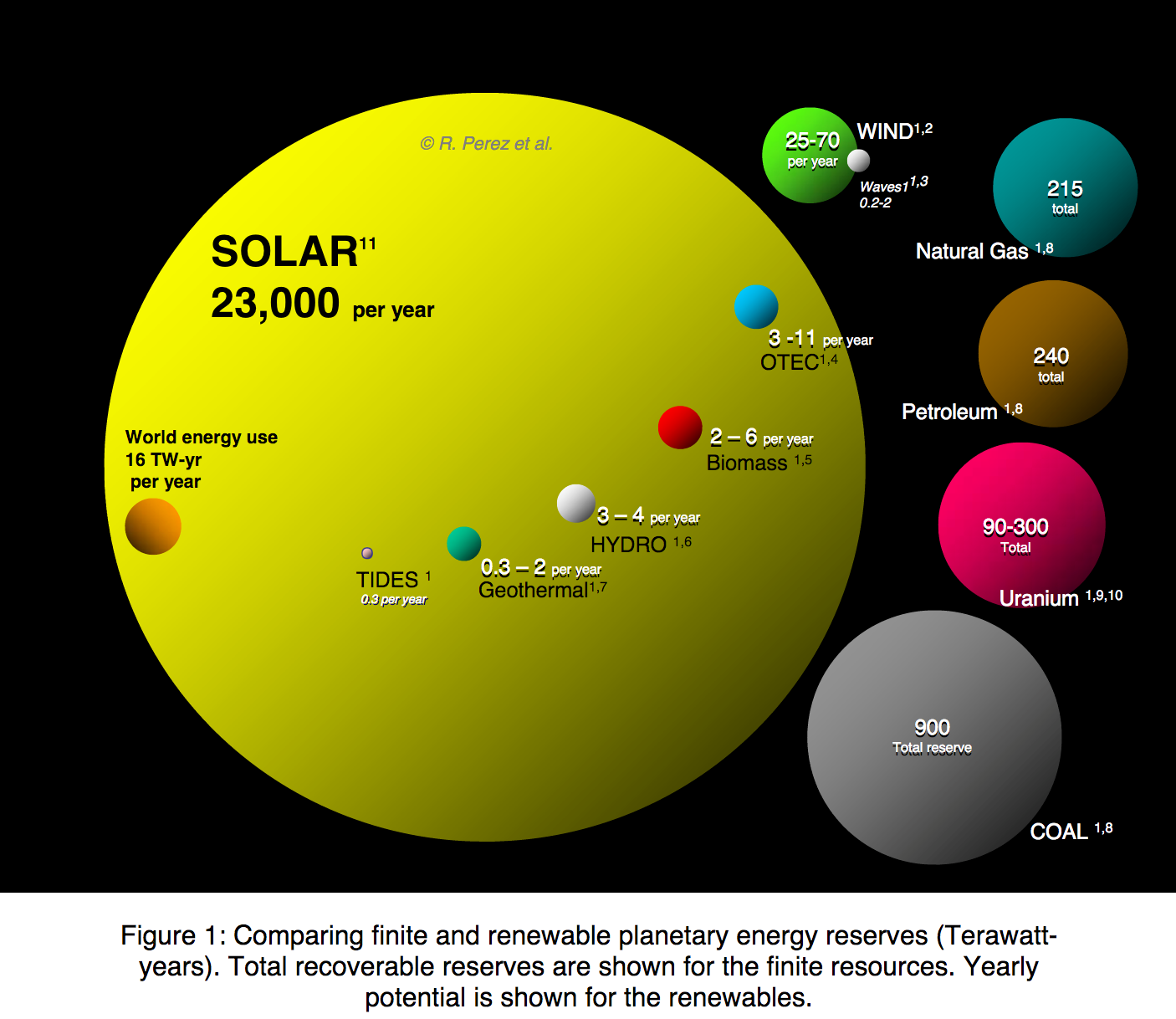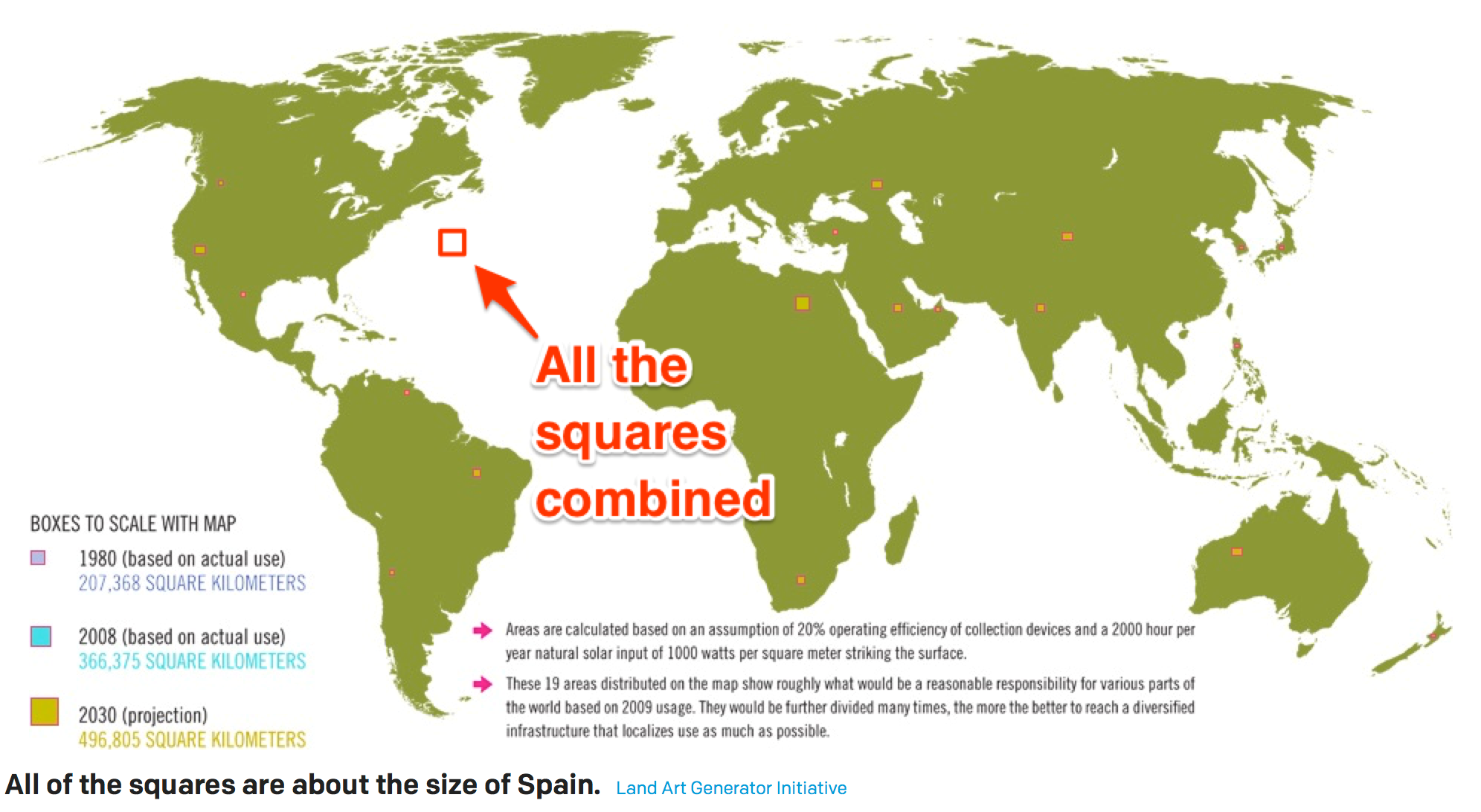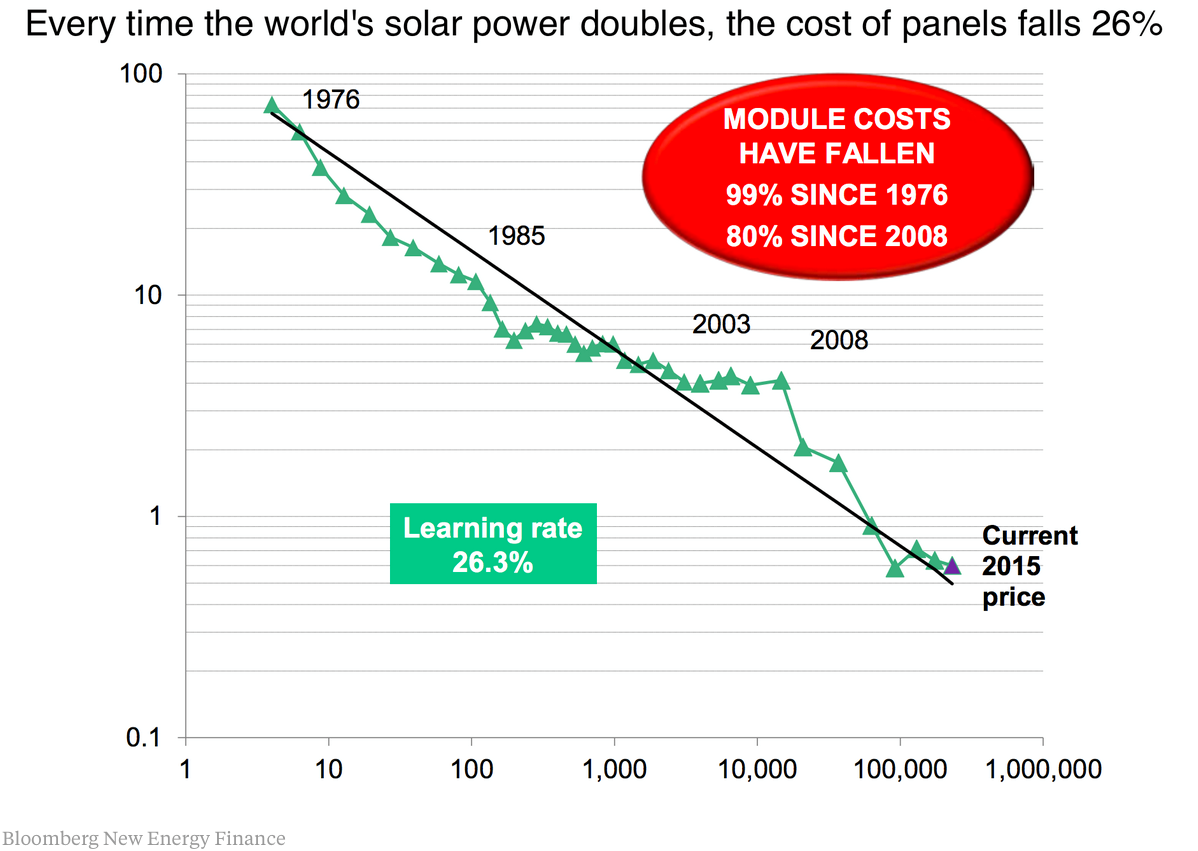No other energy source compares to the energy potential of sunshine. Note that circles for coal, uranium, petroleum, and natural gas are TOTAL recoverable reserves, whereas the renewable energy circles (including the giant yellow solar energy one) are for energy potential per year.
Solar energy is the most abundant energy source on the planet, by far.
Averaged over the entire surface of the planet, a square meter collects 4.2 kilowatt-hours of energy every day, or the approximate energy equivalent of nearly a barrel of oil per year.
Rooftop PV panels make solar power viable in virtually every part of the United States. In a sunny location such as Los Angeles or Phoenix, a five-kilowatt residential system produces an average of 7,000 to 8,000 kilowatt-hours per year, roughly equivalent to the electricity usage of a typical U.S. household.
Solar achieves similar results in many other parts of the country as well. For example, in some northern locations—such as Portland, Maine—that same system generates 85 percent of what it would in Los Angeles on average, and 95 percent of what it would in Miami. (And the system in Maine would actually generate 6 percent more electricity than in Houston using the National Renewable Energy Laboratory (NREL). 2014a. PVWatts® calculator.).

